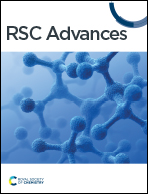First-principles study on the electronic structure and photocatalytic property of a novel two-dimensional ZrS2/InSe heterojunction
Abstract
Photocatalytic water cracking technology provides a broad prospect for solving the current energy crisis using solar energy and water resources. In this paper, a two-dimensional ZrS2/InSe heterojunction for accelerating the process of hydrogen production from water decomposition was constructed, and its electronic structure and photocatalytic property were studied using first-principles calculation. The results show that the lattice mismatch rate of the heterojunction from monolayer ZrS2 and monolayer InSe is 2.48%, and its binding energy is −1.696 eV, indicating that the structure of the heterojunction is stable. The ZrS2/InSe heterojunction is an indirect bandgap with a bandgap value of 1.41 eV and a typical type-II band arrangement. Importantly, the ZrS2/InSe heterostructure has a Z-scheme structure, which is beneficial to the separation of photogenerated electron hole pairs. Moreover, the ZrS2/InSe heterojunction has a strong absorption ability for visible light (up to 3.84 × 105 cm−1), which is helpful for improving its photocatalytic efficiency. The two-dimensional ZrS2/InSe heterojunction is a very promising photocatalyst, as concluded from the above studies.



 Please wait while we load your content...
Please wait while we load your content...